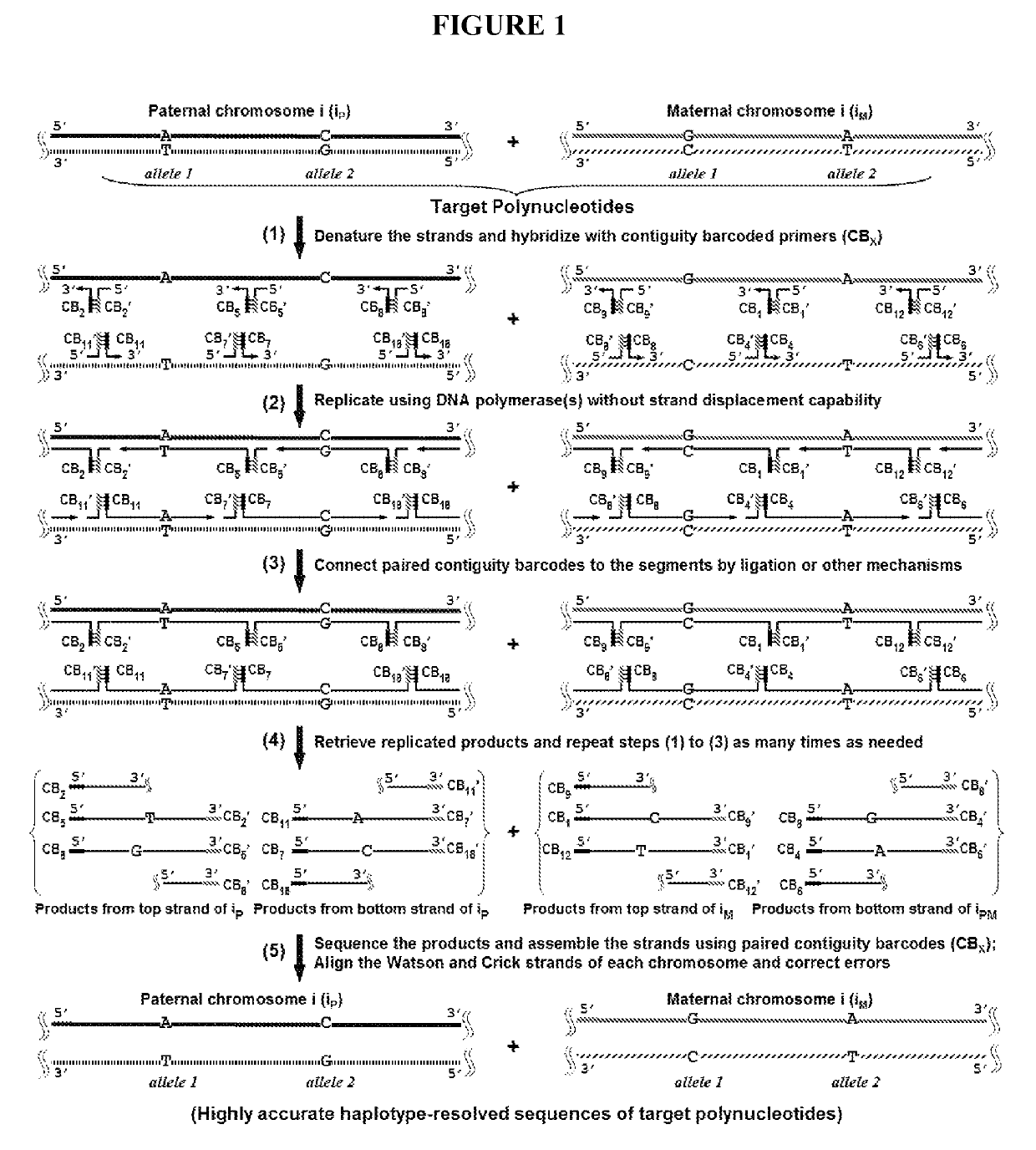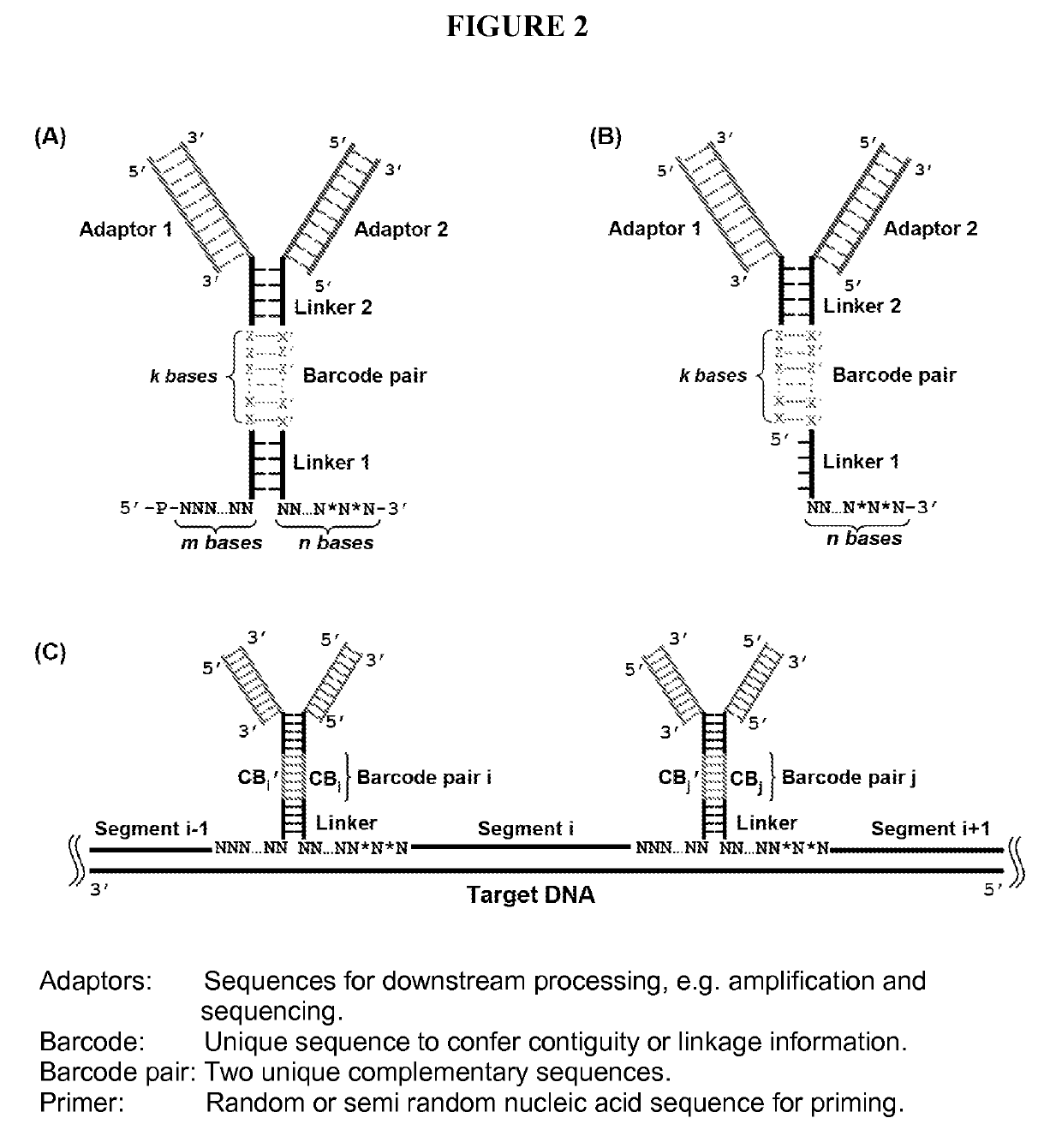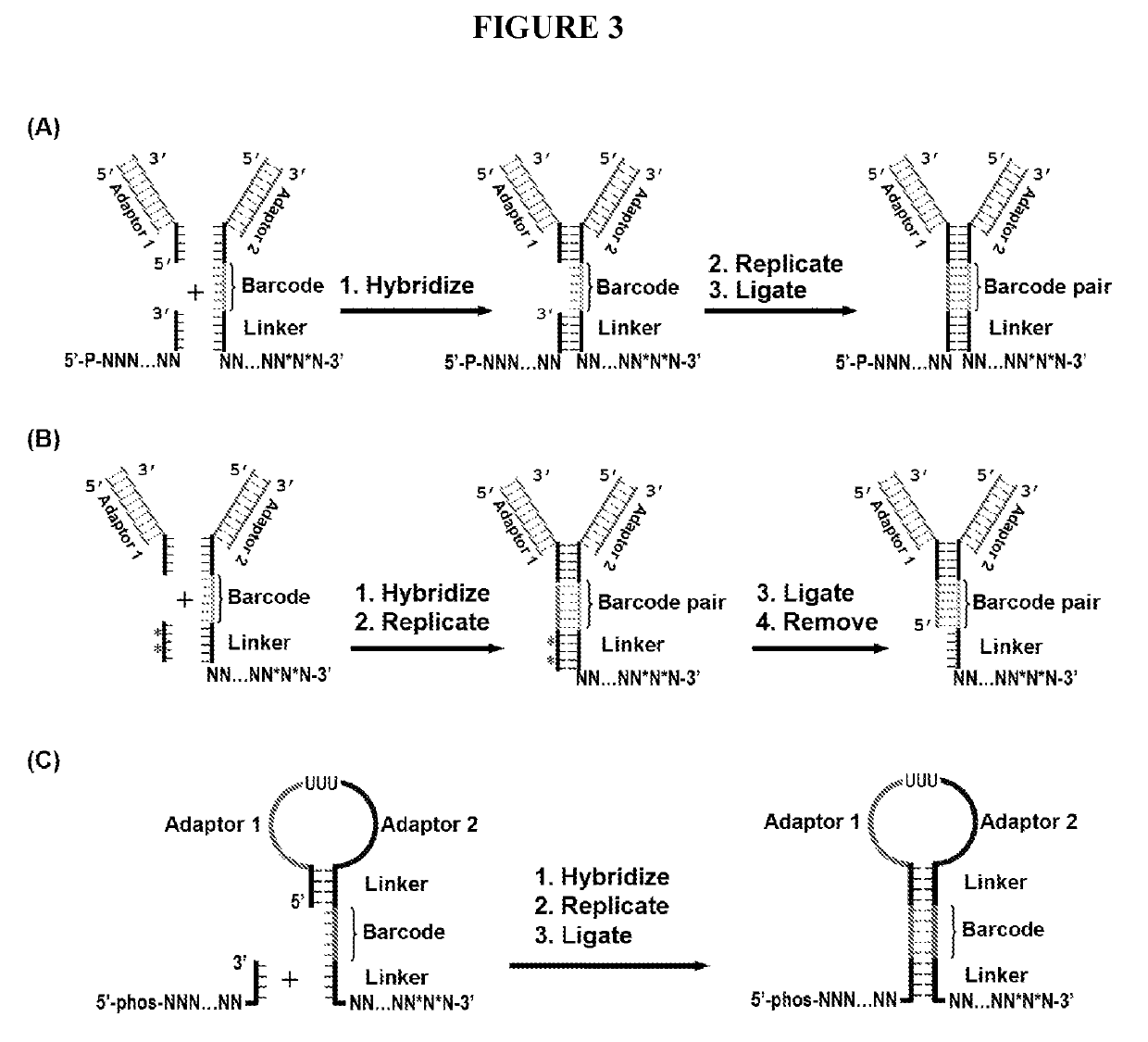Duplicating DNA with contiguity barcodes for genome and epigenome sequencing
a genome and epigenome sequencing and barcode technology, applied in the field of dna amplification and sequencing, microfluidic processing devices, etc., to achieve the effect of improving the accuracy of sequencing
- Summary
- Abstract
- Description
- Claims
- Application Information
AI Technical Summary
Benefits of technology
Problems solved by technology
Method used
Image
Examples
Embodiment Construction
I. Introduction
[0025]The present disclosure addresses three major challenges in de novo genome sequencing: 1) haplotype phasing and genome assembly; 2) accuracy; and 3) single-cell sequencing. The key concept of the BCR technology is illustrated in FIG. 1. First, the two strands of a double-stranded chromosomal DNA molecule are dissociated and hybridized with a pool of random primers attached with unique contiguity barcodes. The primers are extended to replicate the original DNA molecules. The 3′ end of each replicated segment is then connected to the 5′ end of the adjacent segment by ligation or other mechanisms. As such, the segments are hardwired with unique paired connectivity barcodes. Once the barcoded segments are retrieved and sequenced using a high-throughput sequencing platform, a simple lookup of the paired barcodes at both ends of the segments allows for the unambiguous connection of the segments and thus the assembly of the entire sequence of each strand separately with...
PUM
| Property | Measurement | Unit |
|---|---|---|
| temperature | aaaaa | aaaaa |
| temperature | aaaaa | aaaaa |
| temperature | aaaaa | aaaaa |
Abstract
Description
Claims
Application Information
 Login to View More
Login to View More - R&D
- Intellectual Property
- Life Sciences
- Materials
- Tech Scout
- Unparalleled Data Quality
- Higher Quality Content
- 60% Fewer Hallucinations
Browse by: Latest US Patents, China's latest patents, Technical Efficacy Thesaurus, Application Domain, Technology Topic, Popular Technical Reports.
© 2025 PatSnap. All rights reserved.Legal|Privacy policy|Modern Slavery Act Transparency Statement|Sitemap|About US| Contact US: help@patsnap.com



